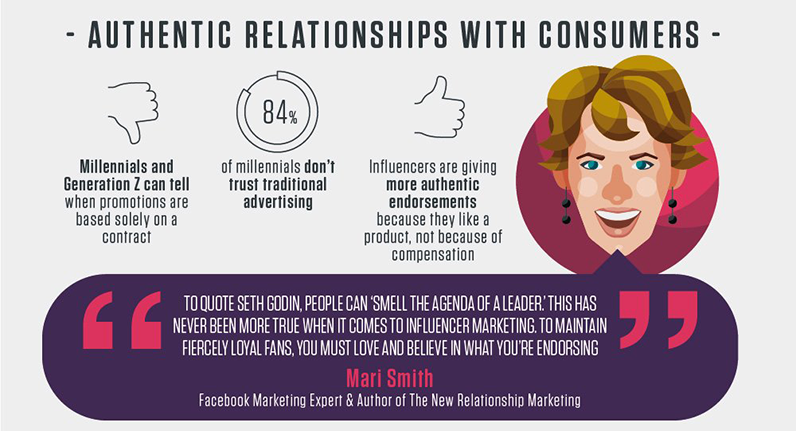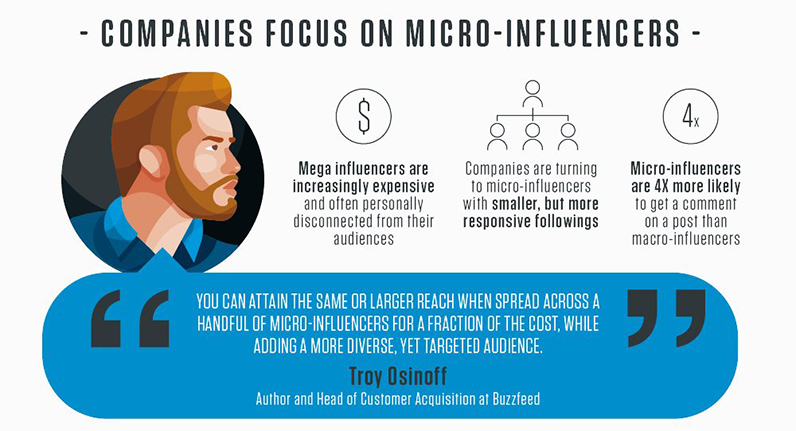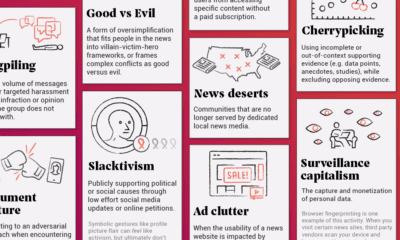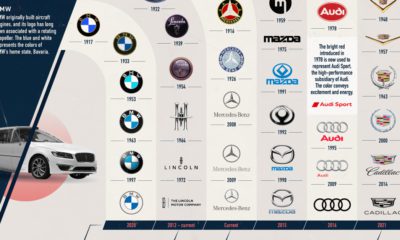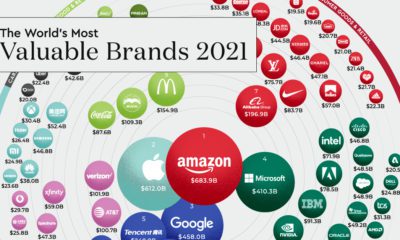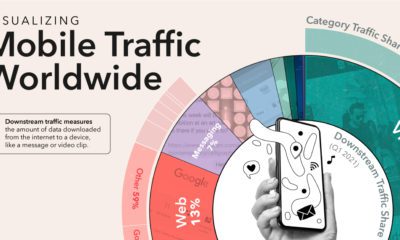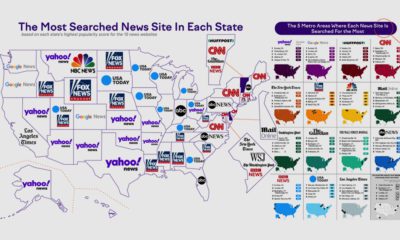Social media platforms are now some of the most heavily trafficked places on the internet, and sharing hubs such as Instagram are increasingly becoming a cultural touchpoint for millions of people around the world.
Tapping into Instagram Influence
Instagram is closing in on a billion monthly active users, and with such a massive audience, social influencers (i.e. people with large, engaged audiences) are raking in the dough from paid brand endorsements. Today’s infographic, from XCart, walks us through the multi-billion dollar phenomenon known as influencer marketing.
Chasing Attention Spans
It’s estimated that 65% of adults in the U.S. use social networks – a figure that spikes to an astonishing 90% for young adults. Social media has become a fixture in our everyday lives and where attention spans wander, advertising is sure to follow. And follow it has. Marketers dumped over $23.68 billion into ads on social platforms in 2016, and that momentum shows no sign of slowing down. However, one growing and increasingly potent form of marketing that isn’t entirely tracked in that total stems from influencers.
The Kings and Queens of Instagram
Instagram (acquired by Facebook in 2012) has seen impressive growth in recent years coinciding with a shift towards more visual content sharing. A combination of good timing and plagiarism has helped the photo sharing network grow by over 350% since 2014. Instagram has also become a major platform for influencers. While endorsements have traditionally come from celebrities such as actors or athletes, today’s influencers have built their audiences though sharing compelling content via social media channels. This is a huge shift as influencers come with all kinds of quantifiable audience sizes and demographic make-ups. It makes for targeting and relatability rolled into one package – particularly in the case of microinfluencers.
The Value of Influence
Power users who create a lot of content and amass thousands – even millions – of fans on a platform find themselves in a unique position. Their influence is worth something more tangible than likes; it’s worth some serious coin. On the flip side of the equation, fans generally understand that influencers use sponsored posts as their compensation for creating content. A contemporary analogy would be occasional commercial breaks in exchange for a “free” TV program. The audience knows there’s no free ride, but if the network goes overboard, or the advertisers don’t align with the show properly, the reciprocity breaks down. Similarly, influencers know that endorsements use up “credit” they’ve built up with their audience, so the successful ones choose their brand relationships wisely and don’t go overboard on sponsored posts. Source
Brands are Betting on Microinfluence
Over 70% of brands indicate they’re using influencer marketing, and brands will be spending an estimated $2.3 billion on it by 2019. While celebrities like Selena Gomez will earn a sizable chunk of that, people with much smaller audiences are each getting their slice of the pie too. Source Not only is it easier to target local or niche audiences by working with microinfluencers, but these audiences also have much higher levels of engagement in the form of comments and likes on posts. According to XCart, influencers with under 25,000 followers are a very affordable investment at ~$130 per post. This means that advertisers can collaborate with hundreds of influencers around the country for the same price as working with a celebrity. Of course, there’s more vetting and logistics required in working with a larger group of influencers, but the payoff could be enormous for the right type of campaign. — Speaking of social media: Follow us on Facebook, Twitter, and LinkedIn to ensure you don’t miss your daily dose of data-driven visual content.
on But fast forward to the end of last week, and SVB was shuttered by regulators after a panic-induced bank run. So, how exactly did this happen? We dig in below.
Road to a Bank Run
SVB and its customers generally thrived during the low interest rate era, but as rates rose, SVB found itself more exposed to risk than a typical bank. Even so, at the end of 2022, the bank’s balance sheet showed no cause for alarm.
As well, the bank was viewed positively in a number of places. Most Wall Street analyst ratings were overwhelmingly positive on the bank’s stock, and Forbes had just added the bank to its Financial All-Stars list. Outward signs of trouble emerged on Wednesday, March 8th, when SVB surprised investors with news that the bank needed to raise more than $2 billion to shore up its balance sheet. The reaction from prominent venture capitalists was not positive, with Coatue Management, Union Square Ventures, and Peter Thiel’s Founders Fund moving to limit exposure to the 40-year-old bank. The influence of these firms is believed to have added fuel to the fire, and a bank run ensued. Also influencing decision making was the fact that SVB had the highest percentage of uninsured domestic deposits of all big banks. These totaled nearly $152 billion, or about 97% of all deposits. By the end of the day, customers had tried to withdraw $42 billion in deposits.
What Triggered the SVB Collapse?
While the collapse of SVB took place over the course of 44 hours, its roots trace back to the early pandemic years. In 2021, U.S. venture capital-backed companies raised a record $330 billion—double the amount seen in 2020. At the time, interest rates were at rock-bottom levels to help buoy the economy. Matt Levine sums up the situation well: “When interest rates are low everywhere, a dollar in 20 years is about as good as a dollar today, so a startup whose business model is “we will lose money for a decade building artificial intelligence, and then rake in lots of money in the far future” sounds pretty good. When interest rates are higher, a dollar today is better than a dollar tomorrow, so investors want cash flows. When interest rates were low for a long time, and suddenly become high, all the money that was rushing to your customers is suddenly cut off.” Source: Pitchbook Why is this important? During this time, SVB received billions of dollars from these venture-backed clients. In one year alone, their deposits increased 100%. They took these funds and invested them in longer-term bonds. As a result, this created a dangerous trap as the company expected rates would remain low. During this time, SVB invested in bonds at the top of the market. As interest rates rose higher and bond prices declined, SVB started taking major losses on their long-term bond holdings.
Losses Fueling a Liquidity Crunch
When SVB reported its fourth quarter results in early 2023, Moody’s Investor Service, a credit rating agency took notice. In early March, it said that SVB was at high risk for a downgrade due to its significant unrealized losses. In response, SVB looked to sell $2 billion of its investments at a loss to help boost liquidity for its struggling balance sheet. Soon, more hedge funds and venture investors realized SVB could be on thin ice. Depositors withdrew funds in droves, spurring a liquidity squeeze and prompting California regulators and the FDIC to step in and shut down the bank.
What Happens Now?
While much of SVB’s activity was focused on the tech sector, the bank’s shocking collapse has rattled a financial sector that is already on edge.
The four biggest U.S. banks lost a combined $52 billion the day before the SVB collapse. On Friday, other banking stocks saw double-digit drops, including Signature Bank (-23%), First Republic (-15%), and Silvergate Capital (-11%).
Source: Morningstar Direct. *Represents March 9 data, trading halted on March 10.
When the dust settles, it’s hard to predict the ripple effects that will emerge from this dramatic event. For investors, the Secretary of the Treasury Janet Yellen announced confidence in the banking system remaining resilient, noting that regulators have the proper tools in response to the issue.
But others have seen trouble brewing as far back as 2020 (or earlier) when commercial banking assets were skyrocketing and banks were buying bonds when rates were low.

